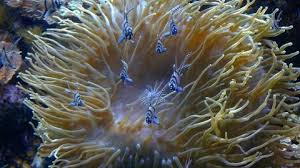Dragons in Chinese Artistic Symbols and Emotional Expressions
The dragon (龙, Lóng) is one of the most profound and enduring symbols in Chinese art and culture. Unlike its Western counterpart, which is often depicted as a fire-breathing menace, the Chinese dragon embodies power, wisdom, prosperity, and harmony with nature. It appears in countless artistic expressions, from paintings and sculptures to calligraphy and textiles, serving as a means of both spiritual representation and emotional expression.
This article explores how Chinese dragons are depicted in artistic symbols and how they reflect a wide range of emotions and philosophical beliefs.
1. The Symbolism of the Dragon in Chinese Art
Throughout Chinese history, the dragon has carried various symbolic meanings depending on the art form and historical period.
1.1 The Dragon as a Symbol of Power and Authority
The dragon is a dominant imperial symbol, representing the emperor’s divine right to rule. In many artworks, it appears fierce and majestic, embodying strength, leadership, and cosmic balance.
- Five-Clawed Dragons (五爪龙, Wǔ Zhǎo Lóng): Exclusively reserved for the emperor, symbolizing absolute power.
- Four-Clawed Dragons (四爪龙, Sì Zhǎo Lóng): Used by nobles and high-ranking officials to indicate lesser authority.
- Three-Clawed Dragons (三爪龙, Sān Zhǎo Lóng): Commonly found in folk art and regional designs, representing courage and resilience.
These distinctions can be seen in palace paintings, embroidered robes, and jade carvings, reinforcing the hierarchical structure of ancient Chinese society.
1.2 The Dragon as a Symbol of Nature and Harmony
Chinese dragons are often associated with natural elements such as water, wind, and clouds. Many artistic depictions illustrate dragons as serpentine creatures flying through storms, summoning rain, or coiling around mountains, symbolizing:
- Agricultural prosperity, as dragons were believed to bring rain for crops.
- The balance of Yin and Yang, where dragons represent Yang (masculine, active force) in contrast to Yin (feminine, passive force).
These representations appear frequently in landscape paintings, temple murals, and scroll art, emphasizing the deep connection between humans, nature, and celestial forces.
2. Dragons in Traditional Chinese Art Forms
2.1 Dragons in Calligraphy and Ink Paintings
One of the most expressive ways dragons appear in Chinese art is through calligraphy and ink paintings (水墨画, Shuǐ Mò Huà).
- Calligraphic Dragons (龙书法, Lóng Shūfǎ): Some master calligraphers create dragon-like strokes in their writing, using fluid and dynamic brushwork to mimic the movement of a dragon.
- Ink Wash Paintings: Many ancient Chinese artists painted dragons using simple yet powerful black ink, emphasizing energy, spontaneity, and movement rather than rigid details.
These techniques evoke strength, wisdom, and spiritual presence, reflecting the artist’s inner emotions and philosophy.
2.2 Dragons in Ceramics and Porcelain
Chinese ceramics, especially blue-and-white porcelain (青花瓷, Qīng Huā Cí) from the Ming Dynasty, frequently feature dragon motifs.
- Circular dragon designs: Represent the cyclical nature of life and eternity.
- Dragons intertwined with clouds: Symbolize divine intervention and spiritual guidance.
The delicate yet powerful imagery of dragons on porcelain reflects both elegance and authority, making these artworks highly prized in both ancient and modern times.
2.3 Dragons in Embroidery and Textiles
In imperial robes, banners, and silk tapestries, dragons were meticulously woven into the fabric to symbolize:
- Prosperity and longevity, especially in royal and ceremonial clothing.
- Protection and divine guidance, often depicted in battle banners and armor embroidery.
These textiles often featured gold and silver threads, adding a luxurious and sacred aura to the dragon’s representation.
3. Emotional Expressions in Dragon Art
While the dragon is often seen as a symbol of power and fortune, it also embodies a wide range of emotions and philosophical ideas in Chinese art.
3.1 The Fierce and Majestic Dragon: Strength and Authority
- In paintings where dragons are shown soaring through storms or roaring among clouds, they symbolize unwavering strength and the power to overcome adversity.
- These depictions often convey determination, ambition, and the indomitable spirit of leaders and warriors.
3.2 The Playful and Gentle Dragon: Joy and Harmony
- Some dragon artworks present the creature as playful, coiling among waves or interacting with a pearl (龙珠, Lóng Zhū).
- These images symbolize happiness, wisdom, and the harmonious flow of life.
This softer portrayal of dragons appears in folk paintings, children’s books, and decorative temple murals, illustrating the dragon’s dual nature as both powerful and benevolent.
3.3 The Mystical and Serene Dragon: Spiritual Enlightenment
- In Taoist and Buddhist art, dragons are often calm and meditative, floating in the sky or wrapped around sacred objects.
- This representation conveys inner peace, divine wisdom, and spiritual awakening.
Such artworks are found in Zen paintings, temple carvings, and Buddhist scriptures, portraying dragons as guardians of knowledge and enlightenment.
4. Dragons in Modern Chinese Art and Cultural Influence
4.1 Dragons in Contemporary Chinese Painting
Modern Chinese artists continue to reinterpret dragons using abstract styles, vibrant colors, and dynamic brushstrokes. Some contemporary paintings use dragons to:
- Express national pride, connecting modern China to its rich heritage.
- Convey personal emotions, using bold, expressive strokes to reflect inner struggles and triumphs.
4.2 Dragons in Chinese Festivals and Public Art
- Dragon Dance (舞龙, Wǔ Lóng): A highly energetic performance during the Lunar New Year, expressing collective joy and celebration.
- Dragon murals and street art: In modern cities like Beijing and Shanghai, artists paint dragons in graffiti and large-scale murals, symbolizing resilience and cultural pride.
4.3 Dragons in Chinese Cinema and Literature
- In modern Chinese films and novels, dragons are often used as metaphors for destiny, strength, and rebirth.
- Characters in martial arts stories (武侠, Wǔxiá) are sometimes compared to dragons, symbolizing their inner power and heroic journey.
These new interpretations show that the dragon’s emotional depth continues to evolve, bridging ancient traditions with contemporary creativity.
Conclusion: The Dragon as a Timeless Expression of Emotion and Art
The Chinese dragon is far more than a mythical creature—it is a living symbol of cultural identity, spiritual belief, and emotional expression. Through various art forms, it has embodied power, joy, wisdom, resilience, and inner harmony for thousands of years.
Whether in ancient imperial paintings, intricate porcelain designs, expressive calligraphy, or modern murals, the dragon remains a dynamic and evolving representation of Chinese artistic heritage. Its rich emotional depth ensures that it will continue to inspire generations to come, reinforcing its place as an eternal guardian of Chinese art and culture.


